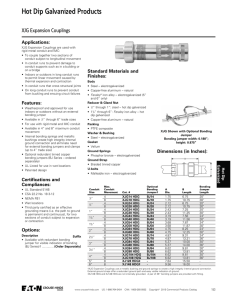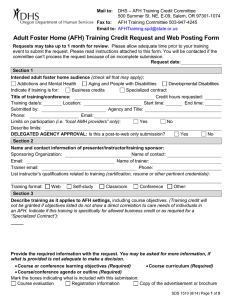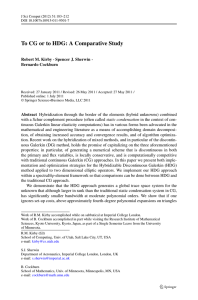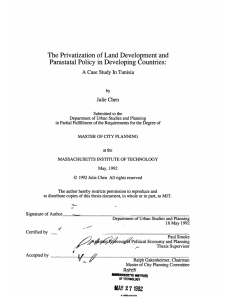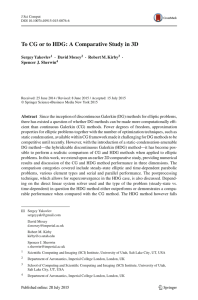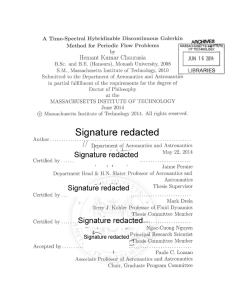Biology 120 (Genetics)
advertisement
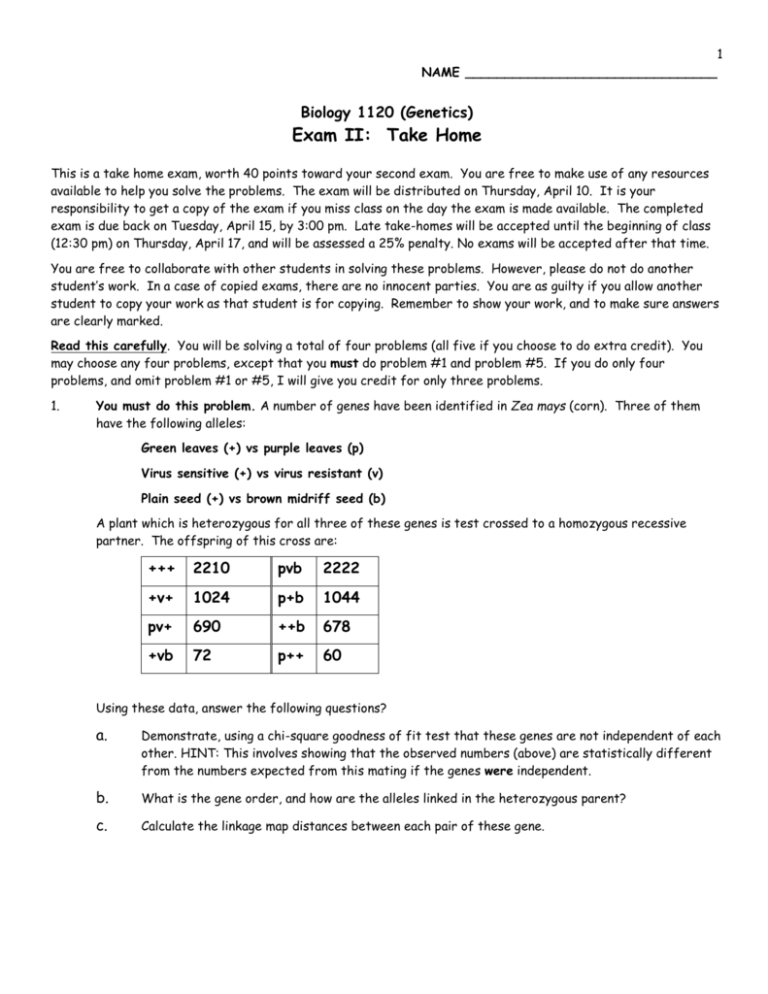
1 NAME ________________________________ Biology 1120 (Genetics) Exam II: Take Home This is a take home exam, worth 40 points toward your second exam. You are free to make use of any resources available to help you solve the problems. The exam will be distributed on Thursday, April 10. It is your responsibility to get a copy of the exam if you miss class on the day the exam is made available. The completed exam is due back on Tuesday, April 15, by 3:00 pm. Late take-homes will be accepted until the beginning of class (12:30 pm) on Thursday, April 17, and will be assessed a 25% penalty. No exams will be accepted after that time. You are free to collaborate with other students in solving these problems. However, please do not do another student’s work. In a case of copied exams, there are no innocent parties. You are as guilty if you allow another student to copy your work as that student is for copying. Remember to show your work, and to make sure answers are clearly marked. Read this carefully. You will be solving a total of four problems (all five if you choose to do extra credit). You may choose any four problems, except that you must do problem #1 and problem #5. If you do only four problems, and omit problem #1 or #5, I will give you credit for only three problems. 1. You must do this problem. A number of genes have been identified in Zea mays (corn). Three of them have the following alleles: Green leaves (+) vs purple leaves (p) Virus sensitive (+) vs virus resistant (v) Plain seed (+) vs brown midriff seed (b) A plant which is heterozygous for all three of these genes is test crossed to a homozygous recessive partner. The offspring of this cross are: +++ 2210 pvb 2222 +v+ 1024 p+b 1044 pv+ 690 ++b 678 +vb 72 p++ 60 Using these data, answer the following questions? a. Demonstrate, using a chi-square goodness of fit test that these genes are not independent of each other. HINT: This involves showing that the observed numbers (above) are statistically different from the numbers expected from this mating if the genes were independent. b. What is the gene order, and how are the alleles linked in the heterozygous parent? c. Calculate the linkage map distances between each pair of these gene. 2 2. Consider three X-linked genes in Drosophila (fruit flies). Eye color: Wild type red (+) vs white (w) Wings: Wild type (+) vs rudimentary (r) Body size: Wild type (+) vs miniature (m) You mate a female heterozygous for all three genes to a male, and get the following male offspring: 3. +++ 82 +rm 18 ++m 108 w+m 386 +r+ 378 wr+ 122 w++ 22 wrm 84 a. What is the gene order? b. Figure out the map distances between these pairs of genes. c. Why doesn’t it matter what the male parent was like in this mating? Consider three linked genes in tomatoes: Purple leaves (A) vs green leaves (a) Normal (round) fruit (F) vs fasciated (flattened) fruit (f) Hairy leaves (H) vs hairless leaves (h) You mate a triple heterozygote to a homozygous recessive partner, and get the following results. AfH 299 aFh 291 afH 13 AFh 17 AFH 110 afh 100 Afh 83 aFH 87 a. Which of these genes is in the middle? b. Calculate the map distances between these pairs of genes. 3 4. Several X-linked human genes have been identified. Among them are: Normal blood clotting (H) vs hemophilia (h) Normal red/green vision (D) vs Deutan red/green colorblindness (d) Normal G6PD activity (G) vs G6PD deficiency (g) A population geneticist has collected data from many families carrying these traits. She has collated several bodies of data, including one study in which many triple heterozygous females, all with the same genetic background (ie, all with the same linkage pattern) all married colorblind, hemophiliac husbands with G6PD deficiency. (LOL! Well, maybe not...this is make believe ;^). Here are the results: 5. HDG 13 HDg 1027 HdG 60 hDG 92 hdg 12 hdG 1047 hDg 64 Hdg 85 a. Determine the gene order b. Calculate the distances between these gene pairs. You must do this problem. The Venusian mugglewort is a very interesting creature. Wild type muggleworts are tall, spindly creatures with rounded heads containing small, straight teeth, droopy wings, straight toes, thin vertical stripes of alternating orange and green (no spots at all), and dour, glum personalities.. However, several genetic variants have been identified. These genes are all apparently linked on the same chromosome. Three point crosses have yielded the following information: Perky wings —7 MU— snaggle teeth —23 MU— crooked toes Horizontal stripes —7 MU— purple spots —13 MU— sprightly personality Pointed head —19 MU— purple spots —5 MU— perky wings **In addition, it has been determined that the end genes are crooked toes and sprightly personality.** Diagram this entire chromosome, with all the genes in the correct order, and with the correct map distances indicated between adjacent genes. Explain how you came to your final design. Good, descriptive diagrams can greatly aid in this explanation.







